Taken Wine Company
Clos de la Vieille Eglise
Pomerol Red Bordeaux Blend 2014
Just a beautiful #pomerol with elegant black currant aromas, velvety tannins and a faint echo of spice. This 2014 is a great representation of the region taken up a notch above very good.
— 7 years ago
Les Cailloux du Paradis (Claude Courtois)
Racines Vin de pays du Loir-et-Cher Red Blend
Taken back at first but wow — 8 years ago
Domaine Denis Mortet
Mes Cinq Terroirs Gevrey-Chambertin Pinot Noir 2015
2015 vintage at home. Super star effort on a village wine. Young vines, can’t wait to drink this when the vines are old. So difficult to get this domaine, so good and only six bottles. Can age considerably but is round, tasty, juicy tannins and good acidity with good aging potential. Fruit bomb but with perfect definition and elegance. What a waste of a life but Arnaud has taken over and did not miss a beat. — 8 years ago
Château Troplong Mondot
St. Émilion Red Bordeaux Blend 2014
Domaine de Mondot belonged to Father de Seze, who had the present-day chateau built in 1745. Very much taken by the estate, Raymond Troplong purchased it in 1850 and constituted the vineyard as we know it today. A blend of 90% Merlot, 8% Cabernet Sauvignon and 2% Cabernet Franc, dark red with black fruit aromas and exotic spice. On the palate cherry and plum with oak, coffee and pepper spice. Big tannins need some time for this beauty to develop for the long term, but it's enjoyable now. — 9 years ago
Henriot
Brut Rosé Champagne
Man oh man this knocked my socks off. Reminded me of an authentic Lambic from Belgium, with funky and earthy aromas of mushroom and rancid lemon (in a good way). On the palate, black cherry fruitiness is bright, yet restrained, and taken over by notes of bread crust, cedary oak, earthy lees (yeast), dusty bookshelf, black pepper, hibiscus with a fully dry, crisp mouthfeel along with aggressive yet elegant carbonation. Out-performs it's price-point. 4.5 — 9 years ago
Domaine Moreau-Naudet
"Forêts" Chablis 1er Cru Chardonnay
Playfully precise. In honour of the dedication of a great way to beaker taken from us too soon. — 9 years ago
Casa de Santar
Estate Bottled Dão Red Blend
It was good wish I could have taken a picture of the nice bottle — 10 years ago
Taken Wine Company
Complicated Sonoma County Pinot Noir 2013
So much delicious fruit, and over-delivers for the price. The slightly Burgundian finish was a pleasant surprise. — 11 years ago
Stella
Red Blend
Deep ruby. This note was taken a full day after the bottle had been opened which definitely was to the wines benefit. Nose of spicy plum, and dark red fruit, cigar box, coffee, and vanilla. Full-bodied with light dissipating velvety tannins. As advertised palate of blueberry, with undertones of green vegetable but not as if over-irrigated. The tannins linger with the earthiness. Long finish. I'm going to give it another year or two before is open the next bottle. Solid 90. — 12 years ago
Salinia Wine Company
Taken Rustic Petillant Chardonnay Blend 2011
Oh, happy day. The perfect wine for the park. Light effervescence, a light sourness but a smooth sip. — 13 years ago
Marchesi Antinori
Tignanello Toscana Super Tuscan Blend 2015
5 bottles of this fell into my cart at Costco on St Patrick’s Day. I have enjoyed past vintages and will lay this one down for a few years. . Well , i set 4 aside. The 5th will be taken to carafe lab for research with my Friday sommelier @Logan Edwards — 7 years ago
Taken Wine Company
Complicated Sonoma Coast Chardonnay 2016
Bright, refreshing — 7 years ago
Krug
Brut Rosé Champagne Blend
There are certain occasions that call for Krug Rosé. So, HBTM! The bottle was corked in the summer of 2014. It’s a blend of 45 reserve wines with the oldest being from 2007 and the youngest 2002. This is why I think Champagne Makers are some of the most talented people making wine. They are constantly blending up to 100 plus wines to bring that bottle to bottle and year to year branded flavor of consistency. On the nose; red & pink spring flowers, cherries, strawberries, watermelon, black cherry, black raspberries, notes of blood orange citrus, baked bread, soft volcanic mineral and elegant chalkiness. The palate is always ridiculously delicate. Micro bubbles, silky rich texture with beautiful soft acidity. The palate fruits are similar to the nose; rich & ripe cherries, strawberries watermelon, black cherry, black raspberries, notes of blood orange citrus with hints of marmalade. Red & pink spring flowers, baguette crust, soft powdery minerals that give the palate a slight sting and super powdery chalkiness done just right. The finish is beautifully rich, textured, revealing itself in layers and lasts minutes. Photos of; Founder Joseph Krug, House of Krug, Winemaker Eric Lebel, Krug’s Clos du Mesnil, a small plot of 1.85 hectares of Chardonnay...one of the world’s greatest vineyards and their salon tasting room. Producer history & notes...Krug was founded by Joseph Krug in 1853. They are based in Reims, the main city in France’s Champagne region. It is one of the famous Champagne houses that formed part of the Grande Marques. Today the house is majority owned by the multinational conglomerate LVMH, which owns Moët Hennessy, Louis Vuitton S.A. and who’s wine producer portfolio includes other well known wine brands such as; Moët & Chandon, Veuve Clicquot, Château d'Yquem, Ruinart & Cheval Blanc, Dom Perignon and many others. Despite LVMH's majority ownership, the family is still actively involved in all the key decisions of the house but does not manage the day-to-day operations. Joseph Krug was born Johann-Joseph Krug, a butcher’s son, in Mainz, on the Rhine in 1800 when the city was part of the Napoleonic Empire. Having dispensed with the name Johann, he left Mainz in 1824 and in 1834 moved on to Paris. Germans were in demand in France as accountants and bookkeepers. So, Joseph joined Champagne Jacquesson in Châlons-sur-Marne. He spent eight years with Jacquesson. His work took him beyond accountancy. He went around Europe testing the market and assessing criticism from wine sellers and customers. He learned about composition and taste so that by 1840 he already seemed to have been blending Champagne for at least one other house. In 1841, he married Emma-Anne Jaunay. The daughter of a French hotelier based in London’s Leicester Square. The following year their son Paul Krug was born. In 1842 he moved to Reims and following a year later, Krug et Cie was founded with his partner, Hyppolite de Vivès. Joseph was fluent in French, English and German and even spoke some Russian, putting the company in position to exploit key overseas markets. Joseph died in 1866 and was succeeded by his son Paul Krug, who had been trained by his father to takeover. Joseph under the supervision of Paul, Krug was established as a Grande Marque. By the 1880s the prestige of Krug was acknowledged in the United Kingdom and became the primary overseas market for Champagne. In 1866, the House moved into Rue Coquebert, in Reims as it remains. After Paul’s death in 1910, he was succeeded by his son, Joseph Krug II. However, during World War I Joseph II was taken prisoner and his wife Jeanne played a key role in the House at a time when the Western Front divided the region between the Allies and the Germans. After the war, Joseph II’s slow recovery led to his nephew Jean Seydoux becoming joint manager in 1924. In that decade, the Krug 1926 and 1928 vintages were created, which have been considered by critics to be amongst the greatest Champagnes. Lawyer and wine writer Maurice Healey declared “Krug” the king of all Champagnes. Further, “that the 1928 Krug was the best wine made in the present century.” By the mid-1930s, Paul Krug II, the son of Joseph II, was active in the business and would become head of the House from 1959 to 1977. His father died in 1967, by which time he was, according to Patrick Forbes, “one of the most popular and respected figures in the Champagne district.” In 1962 Henri Krug, the son of Paul II, joined the management, as did his brother Remi three years later. Their arrival was followed by a series of innovations, including extensions in the range of Champagnes. In 1979, for the first time, a graduate winemaker joined the House. In January 1999, the House became part of LVMH and by 2007, the brothers, while remaining on the tasting committee, had stepped down from day-to-day responsibilities. In 2009 Olivier Krug, the son of Henri, became House Director. At harvest, Krug grapes are pressed close to their plots with the first juice kept for 24 hours in a vat prepared for the fermentation stage. The pressing from each plot is vinified separately. A pressing contains 4,000 kilos of grapes and yields 20.5 hectolitres of first juice (cuvée), which is poured into twelve oak casks chosen at random. Once fermentation is complete, the eleventh and twelfth casks are used to top up the other ten casks in order to protect the new wines from oxidation. For fifteen days, each cask is topped up with wine from the same plot. Krug uses small 205 liter oak casks tailor-made from trees that are more than two centuries old in the forests of Hautes Futaies in Central France. The average age of Krug oak casks is 20 years. They are retired after approximately 40 years of use. The wines remain in the casks for several weeks. During this period, clarification occurs naturally from the cool temperature of the cellar given the coming winter, as does a micro-oxygenation process from the use of natural containers, making the wine more resistant to oxygen over time. Finally, between December and January, the wine is drawn off into small stainless-steel vats. From here, depending on the decisions of Krug’s tasting committee, the wines will either contribute to that year’s assemblage or be stored in steel vats in the House’s library of 150 reserve wines to be used in the blend of a future Krug Grande Cuvée and or Krug Rosé. — 8 years ago
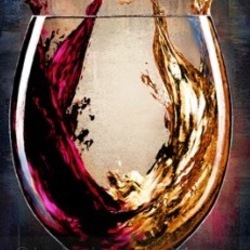

Taken Wine Company
Complicated Central Coast Red Blend 2013
Smooth red. Slight spiciness in back of throat. — 10 years ago
Château Lynch-Bages
Grand Cru Classé Pauillac Cabernet Sauvignon Blend 1989
The 1989 has taken forever to shed its formidable tannins, but what a great vintage of Lynch Bages! I would rank it at the top of the pyramid although the 1990, 2000, and down the road, some of the more recent vintages such as 2005, 2009 and 2010 should come close to matching the 1989's extraordinary concentration and undeniable aging potential. Its dense purple color reveals a slight lightening at the edge and the stunning bouquet offers classic notes of creme de cassis, subtle smoke, oak and graphite. — 12 years ago
Château Rauzan-Gassies
Margaux Red Bordeaux Blend 2016
Drank 1/18/19 at the Union des Grands Crus de Bordeaux event in Miami. All wines from the 2016 Vintage.
Tasting pour, no formal notes taken. Most of these wines are very tight, and will require 5-15 years to really come together. Many will likely improve a few points with time. — 7 years ago

Cooper & Thief Cellarmasters
Bourbon Barrel Aged Cellarmaster Select Red Wine Blend 2014
It's a Lupita! Melanin is poppin and delicious! A wonderful red blend with smooth oak notes. You taste the vanilla along with a nice spice on the back end. Plus at 17% ABV it will prove that a little goes a long way. You can tell that time was taken with the preparation of this wine. A high recommend. #CooperAndThief — 7 years ago
Taken Wine Company
Complicated Sonoma Coast Pinot Noir 2015
Jammy smooth. Tannic — 8 years ago
E. Guigal
La Turque Côte-Rôtie Syrah 1988
From an excellent looking bottle taken to Eleven Madison Park. Deep opaque murky and tawny red. Huge fragrant nose with notes of currant, smoked meat, iron, bacon, black fruit, soil and charred wood. There is a richness in the mouth that is hard to put words to. Long finish that got better over 5 hours of enjoyment. Amazing grape juice. — 9 years ago
Equipo Navazos
La Bota de Manzanilla 'Navazos' Nº 16 Jerez-Xérès-Sherry Palomino Fino 2009
Maybe has lost some of its initial sea-spray punch over time, but has taken on a deep caramel, nutty depth.still saline on the nose. Gorgeous. — 9 years ago
Marcel Lapierre
Cuvée Marcel Lapierre Morgon Gamay 2014
This one confused me at first because it didn't have that "special cuvee" profile at all. It was both lighter weight and lighter in tone (all the way on the red-fruit side of the spectrum) than the standard Lapierre Morgon. That's a big contrast from the 2009 edition, which was so rich and over-the-top that it struck a few of us (me included) as a Sonoma pinot lookalike. Fortunately that's not the case here, yet I was still a bit taken aback not to find that old-vine richness and seve - I even figured I'd be more likely to restock the basic cuvee than more of this. But more time in the glass gives me a much better handle on what makes this special-cuvee material. At least this vintage, it is not about weight or density. I still have the impression that it is lighter in weight than the regular Morgon, but what you get here instead is more layers that unravel and change over time, gaining more clarity until the last drop. Once it gets in its zone the fruit is gentle, pure, and rosy-floral, with a strong rocky character crushed into so fine a grain it gives the wine a classy texture. — 10 years ago
Taken Wine Company
Complicated Sonoma County Chardonnay 2013
2013 Complicated Chardonnay. Very varietal, very fun. — 11 years ago
Domaine Bonnet-Huteau (Château La Tarcière)
Sur Lie Muscadet de Sèvre-et-Maine Melon de Bourgogne 2011
Taken to Hog Island Oyster Co and guess what happened next? — 12 years ago




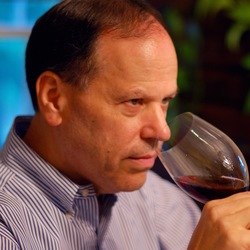




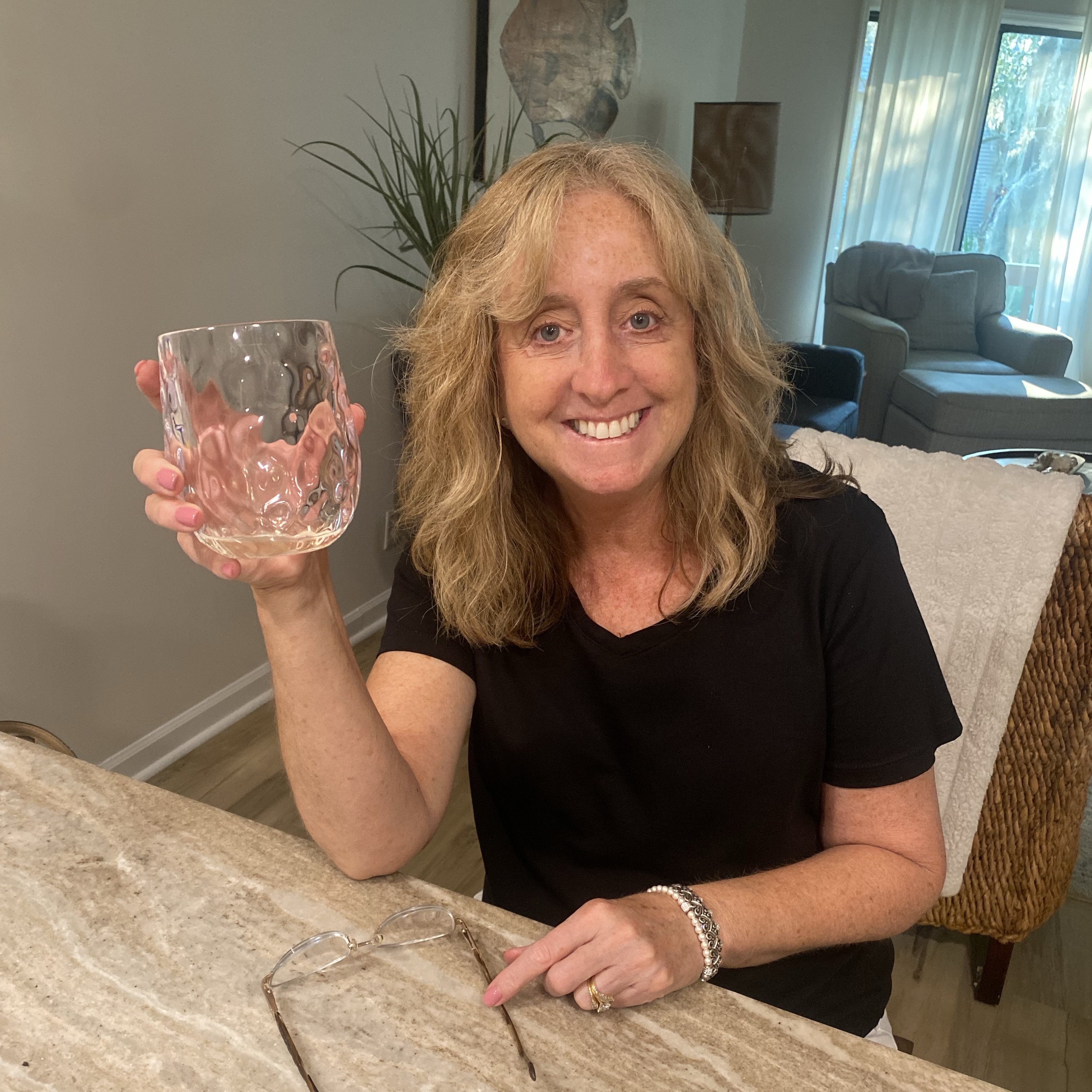
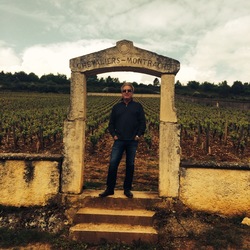

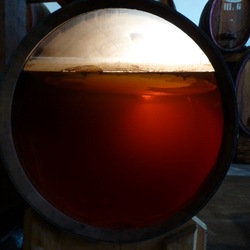

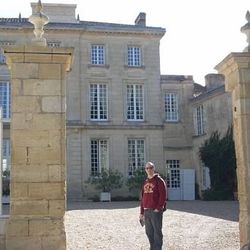


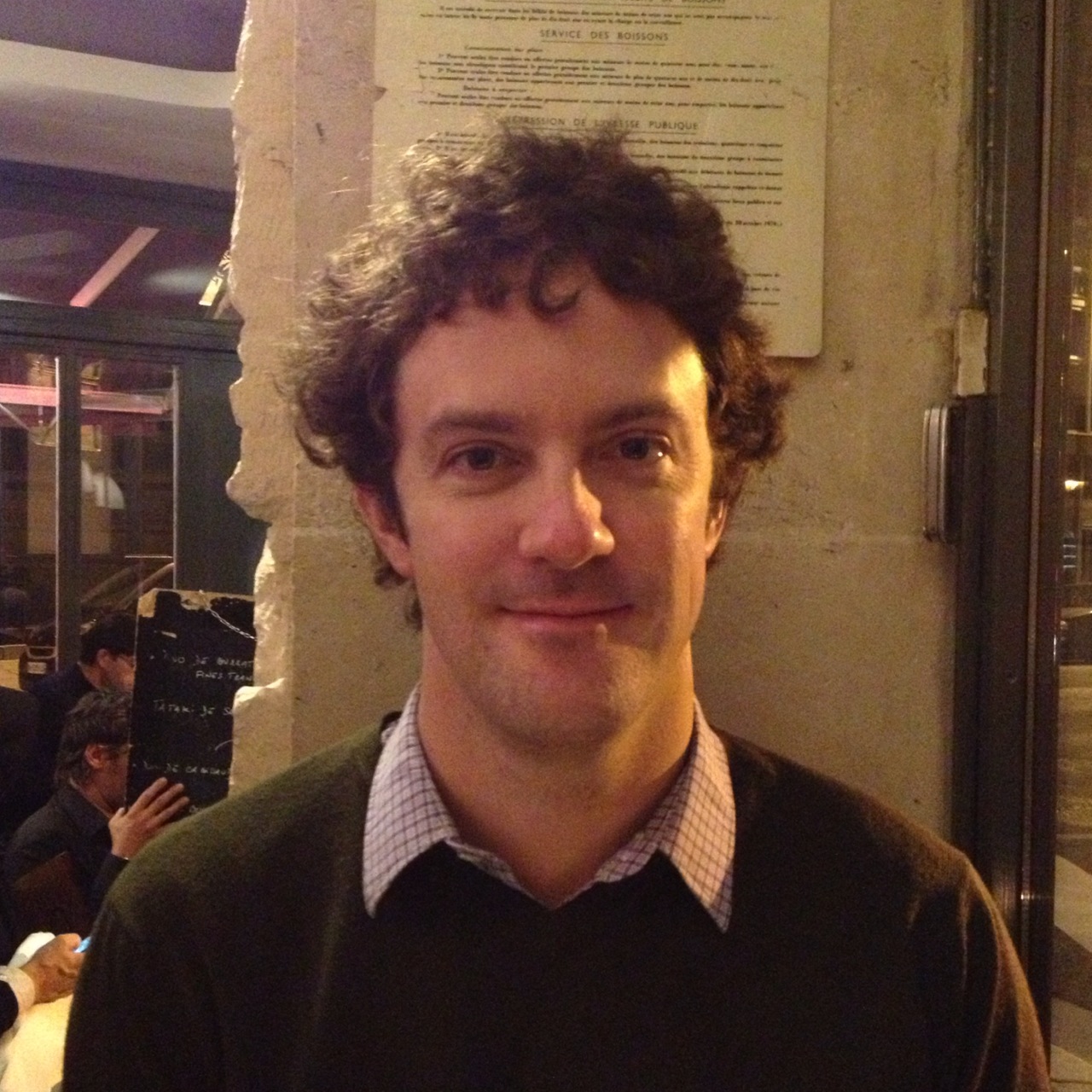
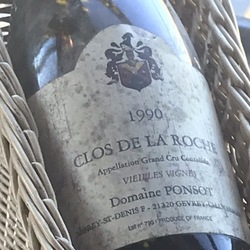



Stephanie Pagan
Powerful. Dark chocolate. Ripe red fruit. — 6 years ago